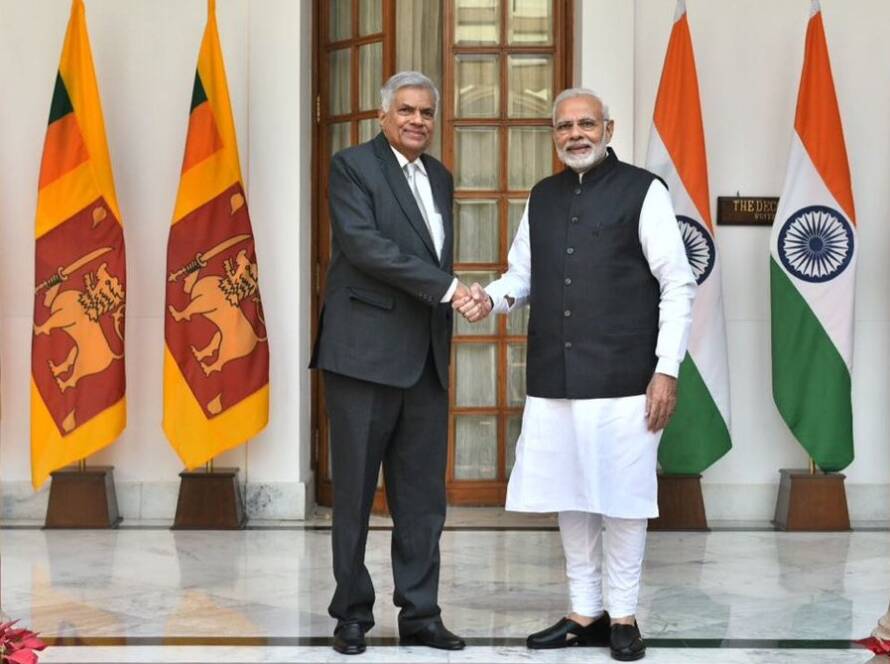By Dr R.H. S. Samaratunga

Discussions about Sri Lanka’s foreign exchange (Forex) reserves have made headlines in the past few months. What are foreign currency reserves and how does a country benefit from maintaining good forex reserves?
Forex reserves areforeign-currency deposits held by country’s central banks and/or monetary authorities. It also includes gold reserves, Special Drawing Rights (SDRs) and International Monetary Fund (IMF) reserve (quota) position. They are more accurately referred to as official reserves or international reserves or official international reserves. Forex are assets denominated in a foreign currency mostly in US Dollars as the most internationally traded currency in the world. The British Sterling Pound, Euro, Yen and Yuan too are used to build forex reserves.
IMF recognizes eight major reserve currencies: the Australian dollar, British Pound Sterling, Canadian Dollar, Chinese Renminbi (Yuan is its primary unit), Euro, Japanese Yen, Swiss Franc, and US Dollar. The US Dollar has been the most sought-after reserve currency for nearly a century. However, currency composition of the forex reserves of the world has undergone considerable changes over the last several decades. By the late 1999, about 71 percent of world forex reserves were maintained in US Dollars. This dropped to approximately 59% by the end 2020 (Arslanalp and Simpson-Bell, 2021). Euro has captured about 20 percent becoming the world’s next largest forex reserve currency after its introduction in 1999. The cumulative world forex reserves during Covid-19 impacted year (Q1 2020-Q1 2021) have risen as well (Table 1). The same was observed in the forex reserves by currency (Table 2) where Asian countries dominated the world’s strongest 10 forex reserves.
Table 1: Forex Reserve by Currency (US $ Billion)
| Reserve Currency | Q1-2020 | Q2-2020 | Q3-2020 | Q4-2020 | Q1-2021 |
| US Dollars | 6771 | 6903 | 6932 | 6996 | 6991 |
| Euro | 2197 | 2272 | 2360 | 2527 | 2416 |
| RMB | 220 | 234 | 247 | 270 | 288 |
| Yen | 653 | 650 | 676 | 718 | 692 |
| Pound Sterling | 486 | 504 | 524 | 561 | 553 |
| Other Currencies | 1378 | 1449 | 1507 | 1627 | 1631 |
| Total | 11705 | 12012 | 12246 | 12699 | 12571 |
Source: IMF (data as of 30/06/2021)
Table 2: 10 Largest Holders of Forex Reserves (US $ Million)
| No | Holder | Amount | Date/Month |
| 1 | China | 3,371,608 | July 2021 |
| 2 | Japan | 1,386,504 | July 2021 |
| 3 | Switzerland | 1,086,371 | 30 July 2021 |
| 4 | India | 633,558 | 3 September 2021 |
| 5 | Russia | 615,600 | 27 August 2021 |
| 6 | Taiwan | 543,080 | July 2021 |
| 7 | Hong Kong | 491,600 | June 2021 |
| 8 | South Korea | 458,700 | July 2021 |
| 9 | Saudi Arabia | 445,657 | June 2021 |
| 10 | Singapore | 407,736 | July 2021 |
China is home to the world’s largest foreign currency reserve recording nearly 27 percent of cumulative forex reserves. Japan holds 11% at second place followed by Switzerland, the only European country to make the list. India in recent years has overtaken Russia to become the fourth largest forex reserve.
Following the global financial crisis of 2008, most countries focused on risk-averse economies and as a result built significant forex reserves. Foreign exchange reserves are used not only to back liabilities but also to influence monetary policy. Forex reserves are required to maintain support and confidence for central bank actions, whether monetary policy related actions or any exchange rate intervention made in support of the domestic currency. It also helps to curb any vulnerability created by sudden disturbances in foreign capital flows, which could arise in crisis situations. A readily available liquid foreign currency stock provides a shield against such effects acting as an essential external liquidity buffer and offers assurance that there will still be enough foreign exchange resources to help the country with crucial imports in case of external shocks. Hence, countries hold forex reserves for several reasons:
(a) To weather economic shocks,
(b) To pay for imports
(c) To service debts, and
(d) To moderate the value of its own currency
Academic discussion on aspects relating to forex reserve adequacies against obligations is not conclusive either. The maintenance of forex reserves is a costly affair, but they are important in preventing or facing crises and useful in mitigating the impact of crises on the national economy. Traditionally adequacy of forex reserves has been judged satisfactory if they can meet the requirements of country’s three months’ import or/and can meet short term debt obligations. Regardless of this preparedness, the various dimensions to be factored in by a country in deciding the degree of forex reserve adequacy is a complex issue.
There are vast differences of forex reserves holdings between various regions in the world. As given Table 3, South Asia holds about 6 percent (2021) of the world’s total forex reserves at present.
Table 3: Reserve Position in South Asia (US $ Million)
| Country | Reserve Amount | Date/Month |
| Afghanistan | 9,446 | February 2021 |
| India | 642,453 | 3 September 2021 |
| Bangladesh | 48,004 | August 2021 |
| Nepal | 11,960 | 15 April 2021 |
| Pakistan | 20,022 | 3 September 2021 |
| Sri Lanka | 2,800 | July 2021 |
Sources: Central Bank websites of respective countries
Note: Present forex reserve levels of Afghanistan are not known.
South Asia has seen improvements in its forex reserve position during pandemic, but disparities among countries in the bloc are visible. India and Bangladesh were able to significantly improve their forex reserve position. Nepal and Pakistan have been able stabilized its position during the pandemic.
Sri Lanka’s forex reserve levels have come down during the period under reference primarily because forex inflows from the tourism industry, a key forging exchange earner, have slumped to a negligible amount after the first quarter of 2020. As a result, outflows, especially on account of foreign debt repayments had to be met largely from the existing forex reserves. In addition, increased amount of health-related import expenditure may also have led to the deterioration of the country’s forex reserves amidst slowing down of foreign remittances inflows in the recent months.
The approach of successive Sri Lankan governments and policy towards building up or maintaining stability in managing forex reserves following the global financial crisis of 2008 remains unaltered. Yet in the context of the compulsions caused primarily from Covid-19, the work in the recent years towards this task has been challenging.
(The Writer is the former Secretary to the Treasury, a retired career civil servant who served as the Secretary to the Petroleum Ministry and Director at Bank of Ceylon.)
***************
Disclaimer – Factum is a Sri Lanka based think-tank providing international relations analysis and public diplomacy consultancies in Sri Lanka and Asia. Visit – www.Factum.LK
References
Arslanalp, Serkan and Simpson-Bell, Chima (2021) ‘US Dollar Share of Global Foreign Exchange Reserves Drops to 25-Year Low’, IMF Blog, MAY 5, 2021.
Siripurapu, Anshu (2020) ‘The Dollar: The World’s Currency’, September 29, 2020 , Council on Foreign Relations, http://www.cfr.org/bio/anshu-siripurapu (accessed on 4th September, 2021).
IMF: https://data.imf.org/?sk=E6A5F467-C14B-4AA8-9F6D-5A09EC4E62A4 (accessed on 16th September 2021)


